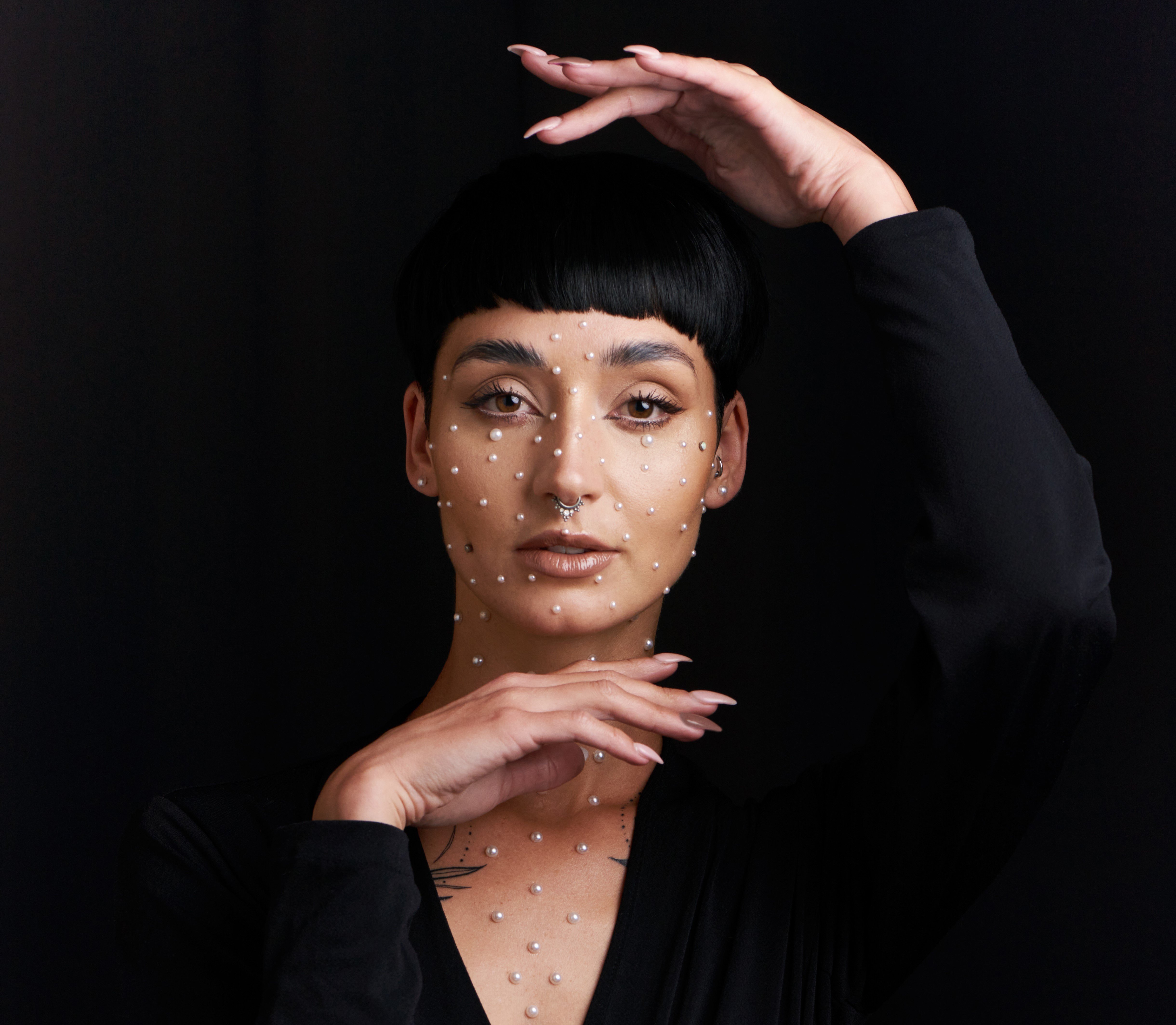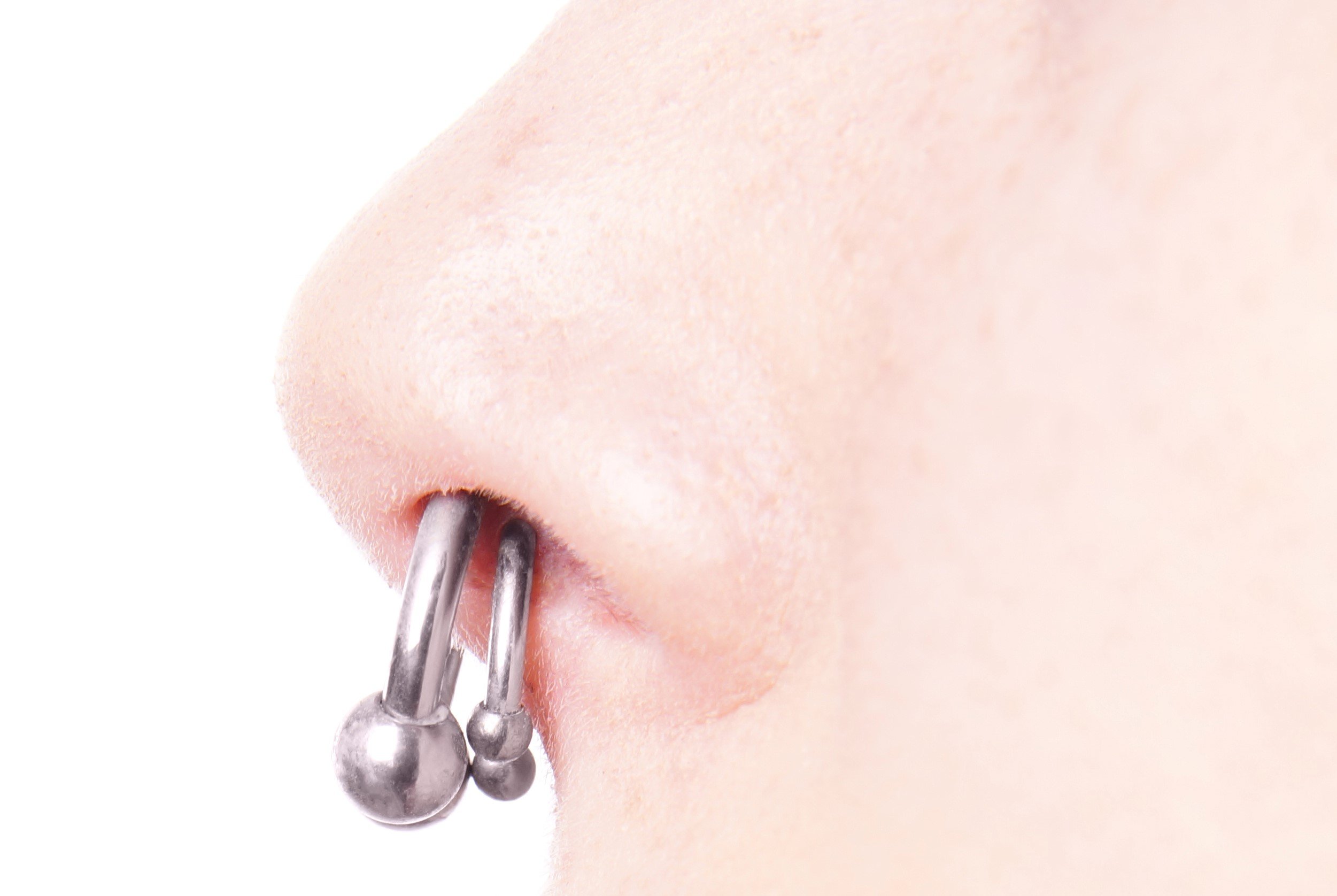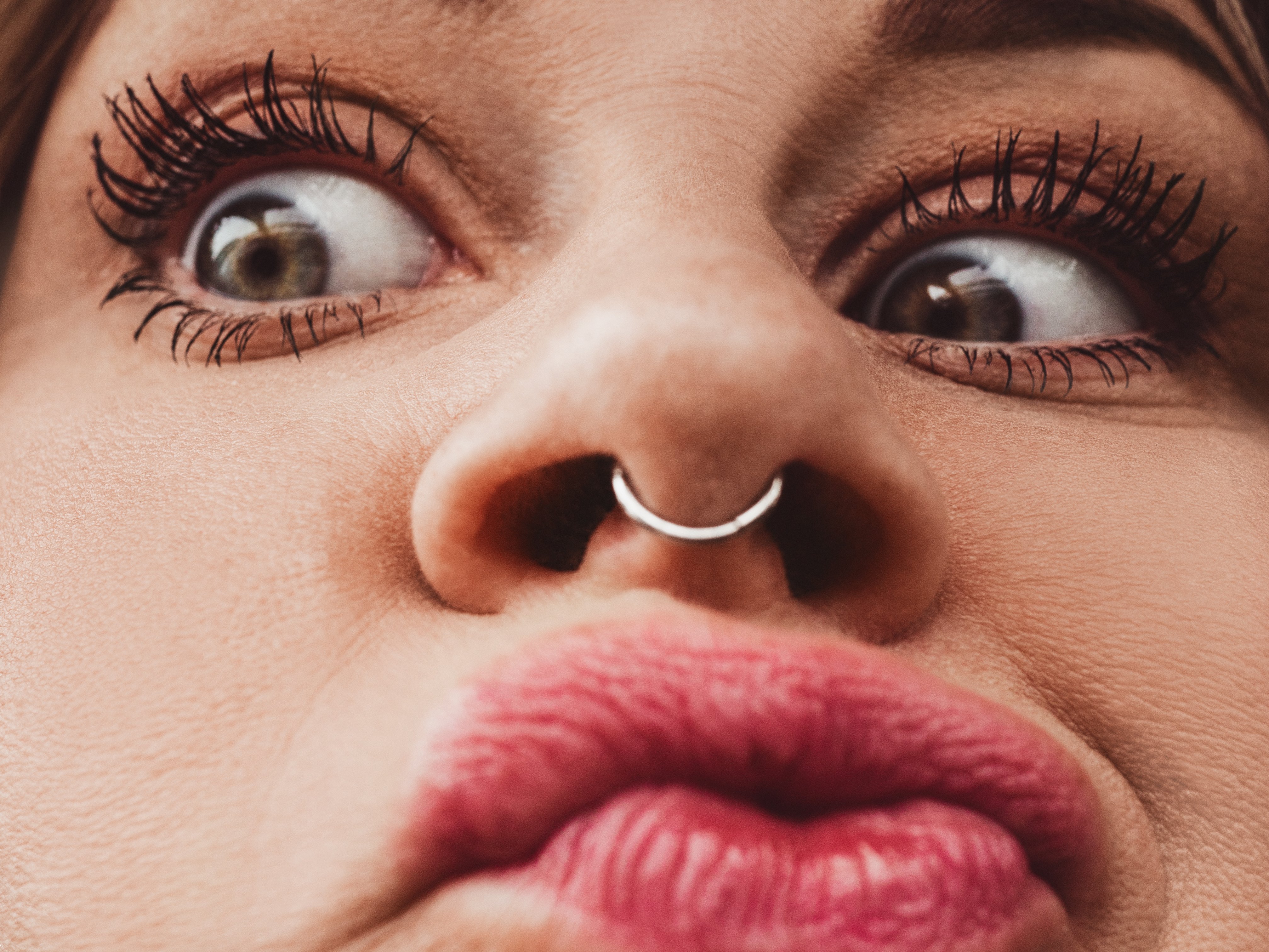
Septum Piercing - From the Pain Level of the Procedure to the Aftercare & Healing Time
Everything you need to know about septum piercing before you decide: What to expect, how much it hurts, aftercare, and possible complications.
Once considered outrageous and edgy, body modification has become mainstream, with more and more people acquiring tattoos and piercings. It has become fashionable, a symbol of "cool," to have piercings other than the traditional lobes.
Septum piercing is gaining a growing following, but before deciding to embark on this adventure, the prospective piercee needs to evaluate the potential pros and cons.

Model with septum piercing. | Source: Getty Images
Of all the trending facial piercings, like the nostril or the medusa, the septum piercing is the most unusual and the fastest growing due to celebrities like Zoë Kravitz, Zendaya, and Bella Thorne.
The septum is the thin wall of cartilage between the nostrils. A septum piercing is done on the thin membrane of skin and flesh beneath it, which piercers call the "sweet spot." The septum itself is not pierced.
If you suffer from seasonal allergies, you might want to consider the timing of your piercing carefully.
Nevertheless, this is one of the human body's most sensitive areas. Before deciding on the procedure, there are questions and facts to ponder.

Septum piercing. | Source: Getty Images
Septum Piercing Is Performed in Several Steps
Your first step should always be to choose a reputable piercer. Any procedure that penetrates the skin barrier carries a risk of infection, so the ideal piercer operates with sterile instruments and gloves.
They will disinfect both nostrils before starting the procedure. Depending on the piercer, one of three techniques might be used. In the first, known as "freehand," the "sweet spot" is pierced with a needle, after which the chosen jewelry will be inserted.
Other piercers may use forceps to open the nostrils for a clearer field of operation and pierce the "sweet spot" with a needle. The third option is for the piercer to use a hollow tube pressed against one side of the "sweet spot" to guide the needle pushed through from the other side.

Woman with a septum piercing. | Source: Getty Images
The Level of Pain during Septum Piercing
For many, the pain level is fundamental to the decision to have or not as far as a septum piercing goes. Like any piercing, it hurts, but perhaps less than some might imagine. Piercer Gemma Thomson opined:
"Septum piercings are one of the least painful piercings on the body; this may come as a surprise to most people."
Nevertheless, it is common for the eyes to tear up. Many find the jewelry insertion more disturbing than the needle itself and describe it as "weird" and "strange" rather than painful. Some piercers recommend that clients with a low pain threshold take a mild over-the-counter analgesic one hour before their procedure.
How Do I Care For Septum Piercing and How Quickly Does It Heal?
The aftercare of any piercing is fundamental to preventing infection. A septum piercing is in a constantly moist area, so extra care must be taken. For piercer Tom Gottschalk, the less you touch your septum piercing, the better. He said:
"I recommend that people spray it with saline twice a day and then forget that it exists. Don't touch it, don't rotate it, don't move it."
Because of the mucus in the nostrils, some piercers recommend using q-tips to clean the area thoroughly with saline. The client should have the piercing inspected throughout the healing process every three months.
When using beauty or skin cleansing products, avoid the area of the piercing, especially when using an astringent solution. Hot showers and baths should be avoided in the first 24 hours, as the heat and moisture are breeding grounds for bacteria.
Side Effects of Septum Piercing
As with any piercing, there are dangers associated with septum piercings. One of the most significant and common risks is an infection, either from nonsterile conditions during the piercing or inadequate aftercare.
There is also the risk of contamination with diseases like tetanus, hepatitis, and HIV -- which is why the choice of the piercer is so essential. If you tend to develop keloid scarring, be aware that it may be uncomfortable even if it is not visible.
The greatest danger, even though rare, is developing a septal hematoma. This happens when blood vessels at the piecing site rupture and blood collect in the area. The symptoms of a septal hematoma include nasal congestion, swelling, pain, heat, and throbbing.
If you suffer from seasonal allergies, you might want to consider the timing of your piercing carefully. Getting the sniffles and blowing your nose with a brand-new piercing can be exquisitely painful. Some people also develop allergies to their jewelry, so choosing the material to insert in the piercing is extremely important.
Choosing Materials and Jewelry for Septum Piercing
The best and safest materials for your septum piercing may not be the cheapest, so consider that when working out your budget. Surgical steel is a safe bet for a first piercing, as is titanium. Thompson said:
"I would stress the importance of being pierced with high-quality materials such as solid 14k gold and implant-grade titanium."
You can go for gold as long as it is 14k or higher and designated biocompatible. Platinum is perfect for body piercings but carries the highest price tag. After the piercing is healed, the choices are endless, so long as the material does not cause an allergic reaction.
Piercers advise that a professional should do the first piercing change after the healing is complete, which can take from 3 to six months.
The information in this article is not intended or implied to be a substitute for professional medical advice, diagnosis or treatment. All content, including text, and images contained on WomanlyLive.com, or available through WomanlyLive.com is for general information purposes only. WomanlyLive.com does not take responsibility for any action taken as a result of reading this article. Before undertaking any course of treatment please consult with your healthcare provider.
